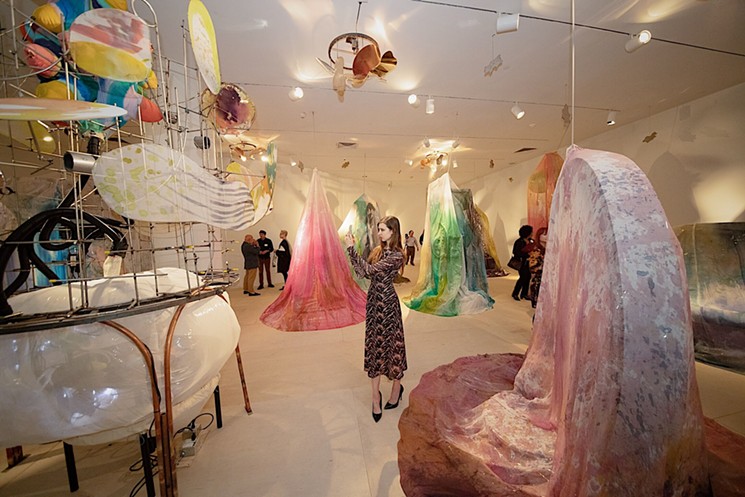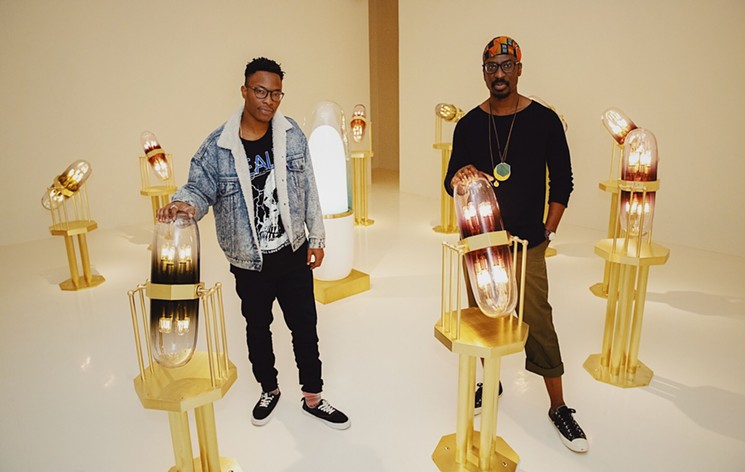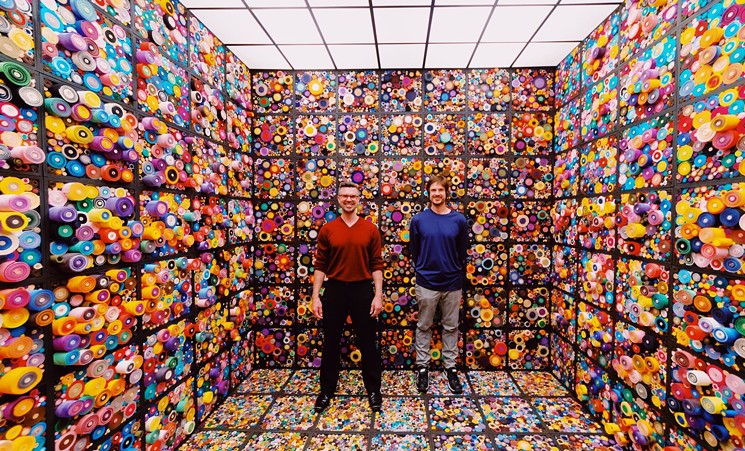Scrolling along: the Ladd brothers and their scroll-filled room.
The Dallas Museum of Art’s newest exhibition is an interactive experience meant to trip us up in the most sensical of ways. How do we feel sound and touch taste? Sure, ’shrooms can help get us there, but there’s also speechless: different by design, which runs at the museum from Nov. 10 through March 22, 2020, and attempts to answer just that type of question.
As it often does at the DMA, the newest exhibition started with an idea by museum senior curator Sarah Schleuning, who spearheaded the DMA’s most attended exhibition in the last decade, Dior: From Paris to the World and the mesmerizing Iris Van Herpen retrospective.
Schleuning selected seven artists from various parts of the world (from American Ini Archibong, now based in Switzerland, to New Yorkers Steven and William Ladd) to develop and conceive individual site-specific installations for a vast immersive sensory experience.

Art and the viewer’s perception have long been interrelated themes in art-centric discussions, but for speechless, the artist’s concepts were informed by conversations with scientists and academics, with which they set out to interpret their own take on the themes of communication and multisensory interactions.
In addition to high-tech showings of innovation, the one theme that’s perhaps inadvertently but unmistakably present is the example of the successfully collaborative communication between communities big and small; the Ladds’ piece is a walk-in room in which one is surrounded by 50,000 or so colorful fabric scrolls, handmade by women, men and children in Dallas and Atlanta — as the exhibition is a collaboration with the city’s High Museum of Art.
Yuri Suzuki’s piece, “Sound of the Earth Chapter 2,” is a large black sphere placed in a soundproof room, playing a range of sounds from around the globe. Depending on where the listener places an ear, one sound bite will play out of the hundreds of sounds present within the piece, which were uploaded to a website by the worldwide public.
Sound, and the way we carelessly manipulate it, is a takeaway of Archibong’s sleek play on light, while the weightiest think piece is ultimately Matt Checkowski’s “Glyph,” which shows two simultaneous films of his fellow project artists discussing their work. As the artists speak, their words show up on screen with a stream of pictures showing the latest Google image of the day corresponding to each word — in a reminder of time’s fleeting quality and the speed at which modern language is evolving.
Most playful is artist Misha Kahn’s section, which has close to a dozen pieces: impractically shaped chairs and curious installations of peculiar shapes, fabrics and shadows that create mysteries to be (never fully) discovered.

Source: Dallas Museum of Art’s Newest Exhibition Makes No Sense Out of the Senses













